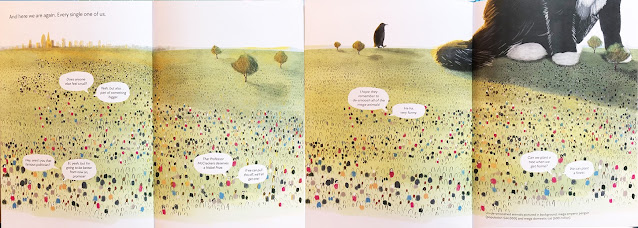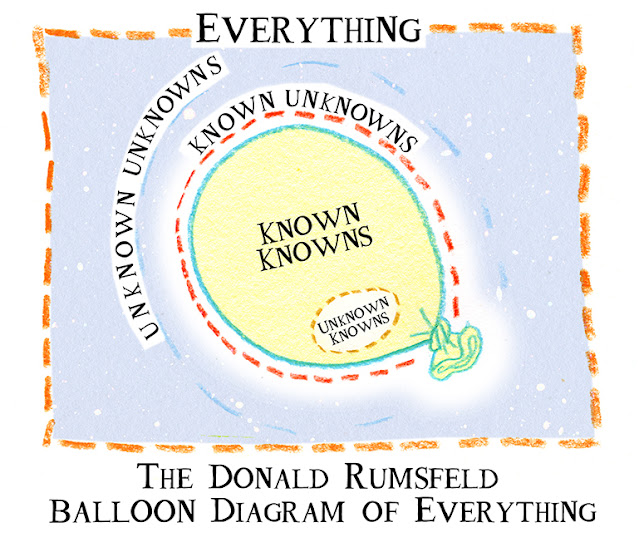Non-fiction books are sometimes seen as factual, and not emotional. But I think this is far from the truth, and in this post I’m going to have a look at a few non-fiction books, and consider how they make us feel.
The Klaus Flugge Prize is awarded to debut picture book illustrators. Winning an award like this is exactly the spotlight you need when you’re just starting in picture books. A non-fiction book had never won before, but this year it did, with Kate Winter’s The Fossil Hunter. It’s the story of Mary Anning. And it shows that a non-fiction book can have powerful visual story-telling.
I was lucky enough to have a chat with Kate at an online event with the brilliant Just Imagine. She showed us the sketches of Mary that had guided her making of the story. Mary often is holding a light, and I think Mary looking hard and shining a light into the past might be an important theme of the book.
 |
| A Mary Anning sketch by Kate Winter |
 |
| Another sketch by Kate |
To me, the illustrations in The Fossil Hunter are about capturing the light and the moment and the feel – of what Mary Anning is experiencing.
There’s a looseness in the style of the pictures – they’re not too detailed, not pinned down, gestural, slightly unresolved – so that your imagination has space to fill in.
 |
| Work-in-progress stages by Kate of an image from The Fossil Hunter |
 |
If these pictures were more photographic, more realistic – we wouldn’t have that space to project onto them. The figure of Mary is often the only woman – alone, resolute, but also looking into a vivid vanished world.
Scattered through The Fossil Hunter are gatefold pages. The gatefold is an opening to a whole new world hidden beneath. Under the gatefold there’s a hidden layer, waiting to be discovered.
Sometimes the gatefold is a door into past worlds that are an explosion of colour, with Mary exploring.
The gatefold is a way to physically dip into the past, into a layer of parallel worlds, as Mary imagines the past, millions of years ago.
It’s also a way to open a book of wonder, a cabinet of treasures.
Sometimes fossils in shale can be like treasures hidden within the leaves of a black book, waiting for you to be the first creature to see them since they were buried in the mud, millions of years ago.
Here is Mary gazing into the unknown, again with her light to see further, to uncover secrets. The pictures are enabling us to feel Mary’s wonder.
In Rob and Tom Sears’s book The Biggest Footprint, all of humanity gets smooshed into one giant human, 3 km high.
They said about making it: “We started out with a weird thought experiment: what if, instead of 8 billion humans, there was just one, colossal mega human, smooshed together from all of our mass? How big would we be? What would we be like, and what sort of mischief would we get up to?”
This book is about getting an idea of the scale of our impact on the planet. Numbers in the millions are really hard for us humans to get our heads round, but this book tries to present this visually, comparing numbers and sizes, always with something shown for scale, so we can start to build the perspective to see what we’re up to as a species.
At the start there’s a huge crowd of 8 billion people – what are they queuing for? It turns out, it’s to go in the smooshing machine.
The mega-human isn’t deliberately bad, but it’s clumsy and not really aware of how powerful it is.
For scale, all the wild tigers there are in the world (less than 4000) get smooshed into a 44 metre tiger. It bounds out of the smooshing machine, a stripey flash, looking pretty big perched on the Taj Mahal…
We get to compare the 3 km height of the megahuman with the smooshed mega giraffe (size: up to the ankle) The unbelievable scale of what we’ve done to our planet in the last 100 years is shown by the changing sizes of the mega-animals.
Finally our mega-human meets all-the-humans-who-have-ever-lived, and then a mega-creature who is All-Life-On-Earth, both of them increasingly enormous – but not as big as the monstrous ball that is Everything-On-Earth-Made-By-Humans. And now I’m feeling dizzy with the perspective – the human-made world is now more massive than the living one.
 |
| In this picture the small figure talking is All-The-Humans-Who-Have-Ever-Lived, the Mega-human is the teeny blue blob to the left of them. |
The scale of our impact is incredible. The people of Earth are producing stuff (concrete, metal, tarmac etc) every week that is equal to their collective bodyweight.
In these final spreads all the people of Earth have been de-smooshed – (this could have been a good gatefold!) How it makes us feel is an important factor – we’ve been included in the smooshing process, we’ve been taken on a tour of the scale of life on Earth and the scale of human impacts, we’ve been shown how we could turn ourselves around, and we’ve been released from being smooshed to be individuals who feel part of something with immense power – and what if the whole of humanity got a Nobel Prize for turning the fate of the Earth around? Maybe we feel a bit of hope.
Tom and Rob Sears said:
“It is easy to feel hopeless. We tend to reason that the individual changes we can make are tiny compared to the scale of the crisis. Well, that may be true! But the lesson of the mega human is that when we act together we do have immense power, power to do both harm and good.
As 21st century individualists, it can be hard for us to accept the idea that being a small part of something powerful ‘counts’ as real power. We’re fixated on how much individual control we can exert and we ask ourselves, “Why make a change when the world may crash and burn anyway? Or why vote when my one puny ballot paper almost certainly won’t change the result?”
This isn’t the way to think. The truth is you are part of something powerful whether you like it or not – whether you act or not. The question is which larger force you are going to be a part of.”
My final non-fiction book with heart is The Observologist, by Giselle Clarkson –it’s ‘a Handbook for Mounting Very Small Scientific Expeditions’. This book finds the wonders in the everyday. The closer you look, the more you see. Nothing is boring. Every creature is busy living & experiencing its own life, with its own hopes and fears, and it feels like something to be it.
You can find tiny treasure. There’s usefulness in being bored. This book is funny but also inspires curiosity and a fierce love of nature, and respect for small creatures like the humble woodlouse. And that when you are observing and exploring, you are being a scientist. Clarkson doesn’t shy away from giving you the proper science words for stuff – you are being respected as a scientist who can deal with the real words.
Being a matchbox fan, I particularly liked this spread.
'
Keats, in his poem Lamias, complained that “Philosophy (AKA science, especially
Newton) will clip an Angel’s wings,
Conquer all mysteries by rule and line,
Empty the haunted air, and gnomed mine –
Unweave a rainbow..”
Books like The Observologist show how wrong that is – that every tiny thing gets more interesting the closer you look, that the more you know about the world, the more extraordinary and strange and wonderful the universe and life on Earth become, and everything is interesting.
When I made this Donald Rumfeldt balloon diagram of everything, I discovered that as your balloon of KNOWN KNOWNS gets bigger, its skin – the membrane that is KNOWN UNKNOWNS gets bigger too – so the more you know, the more you realise there is to know – and this is a good and exciting thing.
Mary Anning had no idea of Darwin’s big idea, she lived too early. In her time, creation was all made by God, and animals were all separate creations – humans most separate of all.
Darwin’s great idea, sketched in a notebook – was that everything is related, it is all linked together in a tree of life: we are woven together and related to everything and everyone else who has ever lived on earth, from bacteria to sponges to sharks to tigers to humans. The fact that we’re alive on this improbable, beautiful, vanishingly rare, precious pale blue dot of a planet is a miracle, an impossible wonder.
Mini's latest book is The Greatest Show on Earth, published by Puffin.
 |
































1 comment:
Wow! What astonishingly powerful beautiful books! As you say, making us FEEL, just as we should, the wonders and horrors and scope for unknown possibilities we might play a part in. An amazing blog post, Mini, ... that I shall now read again, and then set off to the bookshop because you've made me want all of those books. Thank you.
Post a Comment